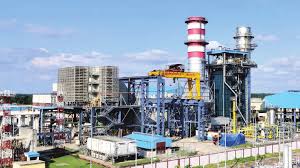The government is exploring the use of liquefied petroleum gas (LPG) as an alternative fuel for the 800-megawatt (MW) Rupsha Power Plant in Khulna, which remains non-operational despite being scheduled for commissioning in February this year.
Originally designed to run on natural gas, the Rupsha plant requires 70 million cubic feet per day (mmcfd) of gas—an amount that cannot currently be supplied through the upstream gas pipeline network.
With the plant unable to start operations due to this supply shortfall, authorities are now considering alternative fuel sources, particularly LPG, to keep the facility functional.
Government and Expert Reactions
Power and Energy Adviser Dr. Muhammad Fouzul Kabir Khan stated that the interim government is actively exploring alternative fuel options, especially for large-scale power plants like Rupsha.
“If we succeed in running the Rupsha plant on LPG at a reasonable cost, this model could be replicated in other plants,” he said.
He added that the Ministry of Power and Energy has been instructed to compare the costs and feasibility of using LPG versus imported liquefied natural gas (LNG) for power generation. A dedicated committee has already been formed to study the issue.
“It is technically possible to convert the plant from natural gas to LPG,” said Professor M. Rezwan Khan, a member of the government-formed committee. “However, we need to assess the conversion costs and compare them with the cost of LNG imports.” The committee’s first meeting is scheduled for May 20, 2025.
Why the Government Is Seeking Alternatives
The Bangladesh Power Development Board (BPDB) estimates it needs a maximum of 1,698 mmcfd of natural gas to operate its 47 gas-fired power plants during peak demand, and at least 1,558 mmcfd during summer. However, BPDB currently receives only around 1,000 mmcfd, forcing it to explore alternative fuels to maintain power generation.
Earlier this year, Just Energy News reported on the situation in a story titled “Rupsha Power Plant: A Costly Gamble with No Gas Supply” (published February 10, 2025).
A Project Marred by Delays and Mismanagement
The 800MW Rupsha Combined Cycle Power Plant was approved by the Executive Committee of the National Economic Council (ECNEC) in 2018.
Backed by the Asian Development Bank (ADB) with a total cost of Tk 8,498.65 crore—of which ADB provided Tk 5,987.87 crore—it was expected to become a cornerstone of Bangladesh’s power sector, supporting industrial growth and energy security.
However, years later, the plant remains incomplete and non-functional. Initially scheduled for commissioning by June 30, 2022, the deadline has been extended to June 30, 2025, due to persistent delays and lack of gas supply.
Despite signing a Gas Supply Agreement (GSA) in March 2024 under pressure from then-State Minister for Power and Energy Nasrul Hamid, questions remain about the availability of gas before 2027.
Planning Crisis: A Symptom of Broader Policy Failures
The Rupsha project has become emblematic of poor planning and overcommitment in Bangladesh’s energy policy. During an inspection in August 2024, Dr. Fouzul Kabir Khan expressed concern over proceeding with the project without securing a reliable gas supply.
He directed officials to explore the possibility of rationing gas from upstream sources and proposed partial commissioning in November 2024 with a supply of 40 mmcfd.
An inter-ministerial committee later found that the plant could operate for only 1–2 days per month under this arrangement.
While it could generate 400MW during those days, it would simultaneously cause shutdowns at other gas-fired plants like those in Sirajganj and Khulna, which together contribute 780MW. Rather than solving the energy crisis, the Rupsha plant would merely shift the problem to other regions.
Financial and Operational Consequences
The prolonged delay has also increased the project’s financial burden. The BPDB estimates that Tk 108 crore will be spent between February 22 and 28, 2025, just to commission the plant.
Another Tk 184 crore will be needed to keep it running intermittently until December 2026. These figures do not account for ongoing maintenance of an idle facility, all of which ultimately fall on taxpayers.
Adding to the challenge is Bangladesh’s declining gas production. Domestic output has dropped from 2,700–2,800 mmcfd in 2017 to around 2,100 mmcfd today. Even with imported LNG, total supply remains insufficient to meet demand. Promises from Petrobangla to supply LNG to NWPGCL from 2020 have yet to materialize.
ADB Under Scrutiny
The Asian Development Bank’s role in the project is now under investigation by the Anti-Corruption Commission (ACC). Questions have been raised about why ADB approved funding despite clear warnings about gas availability.
Feasibility studies projected a return of 6.5%, but revised calculations show inflated rates between 12–18%, raising concerns about due diligence and financial transparency.
One senior official, requesting anonymity, criticized the project as an example of political decisions overriding technical feasibility.
Uncertain Future
Petrobangla’s recent analysis suggests that meeting Rupsha’s gas needs would require sacrificing allocations to other southwestern power plants.
Complicating matters further, the plant’s contractors are reportedly unwilling to implement long-term preservation measures due to concerns over equipment degradation, should operations remain suspended.
Allegations have also surfaced about vested interest groups pushing the project forward for personal gain. These groups were involved in failed attempts to connect the plant to the national grid through projects like the Alenga–Bheramara pipeline and the Payra regasification unit.
What Lies Ahead?
The most realistic option, according to BPDB, is to reallocate gas from national reserves to run the Rupsha plant. However, this could create shortages in other regions and only allow for sporadic operations.
During peak periods—such as summer, Ramadan, and Boro season—gas supply to Rupsha will likely be impossible. Authorities are now considering operating the plant only during national holidays to avoid disrupting supply to other parts of the country.
In the meantime, NWPGCL has warned that without a consistent gas supply, costly preservation efforts will become unavoidable, adding further to the project’s already ballooning costs.

